Research
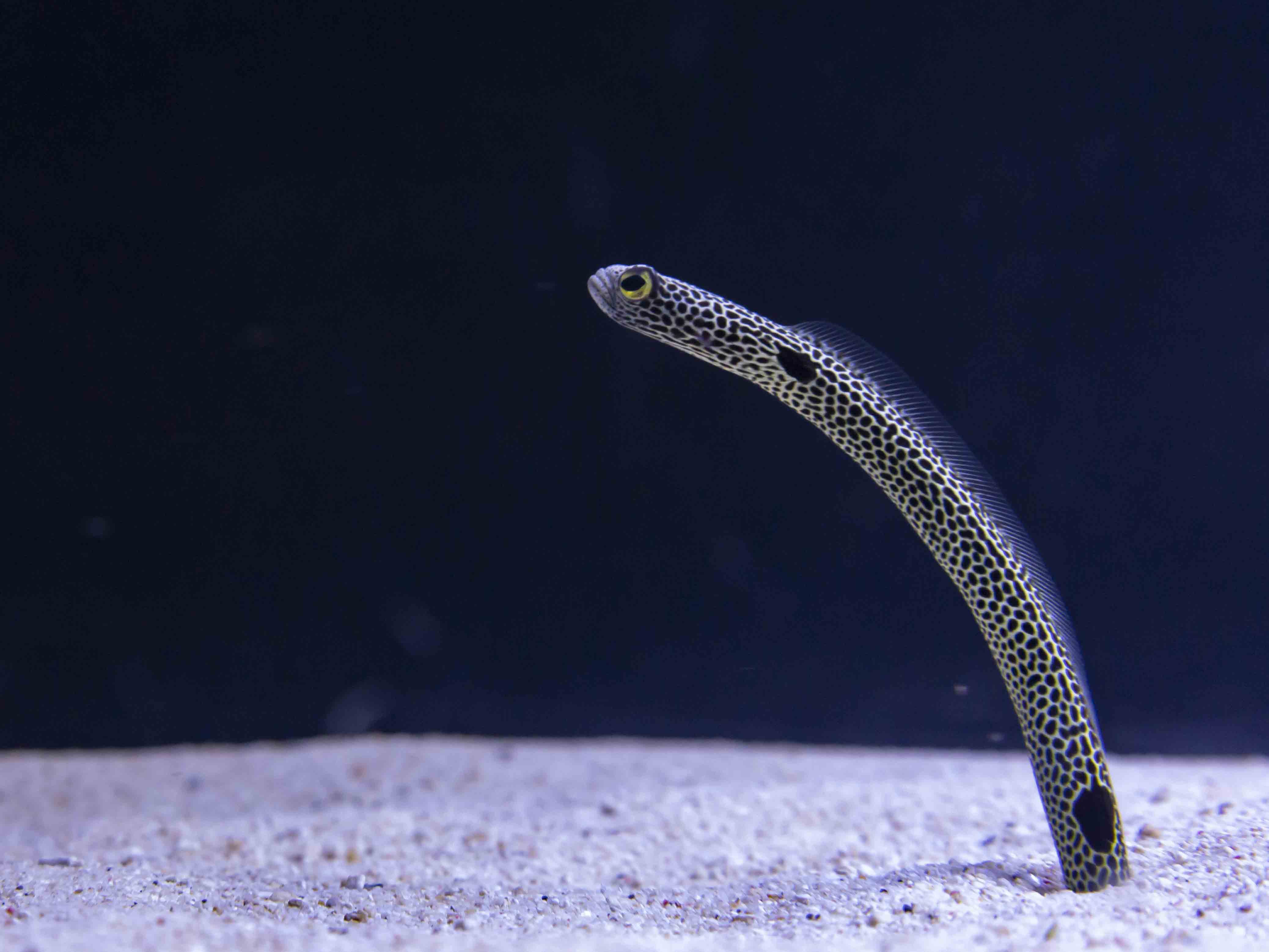
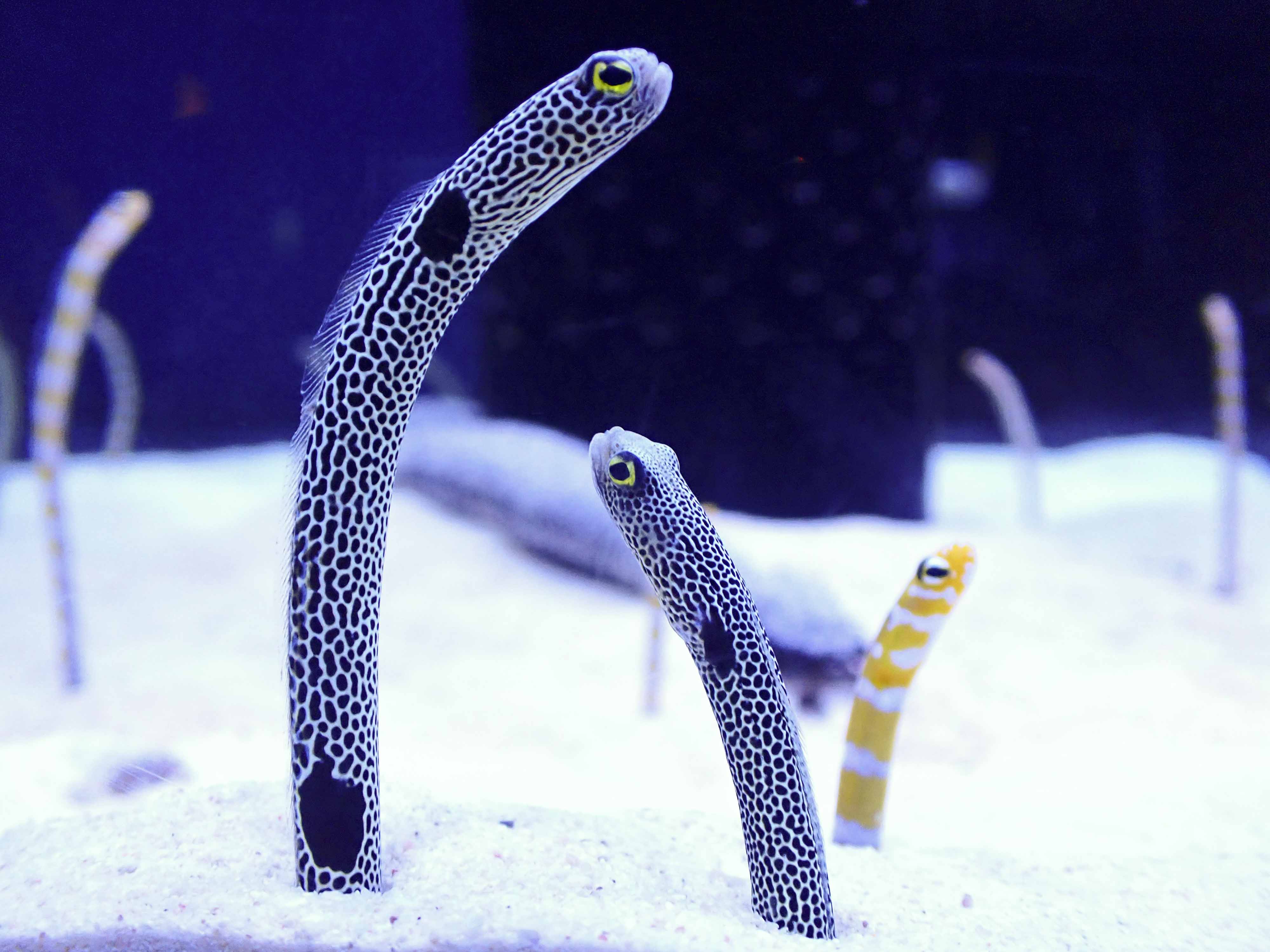
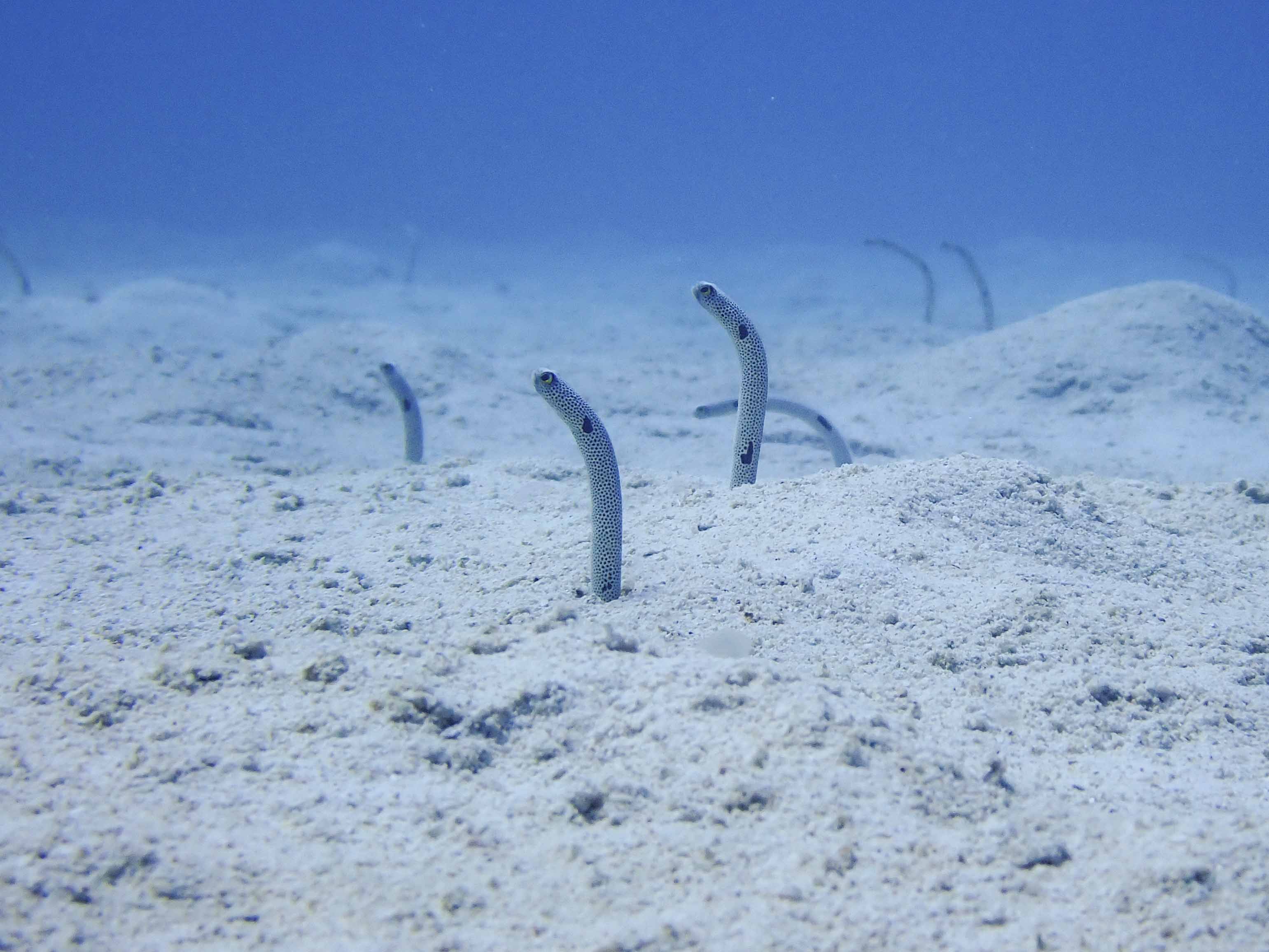
Effects of Flow Speed on Garden Eels
Garden eels, a popular fish often seen in aquariums and during diving expeditions, are known for their unusual feeding habits. They remain partially buried in the sand while catching drifting plankton, making them an ideal subject for research on the interaction between flow and behavior.
Feeding behavior of fish
Feeding is how fish acquire energy for growth and reproduction. Therefore, feeding behavior has been studied extensively. Fish feeding behavior depends on various factors such as flow, prey density, prey size, light, and predators.
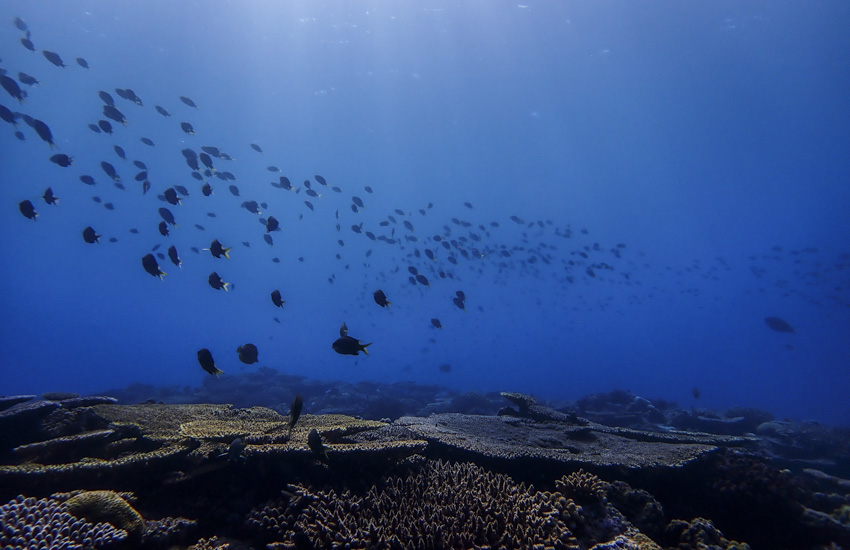
Among these factors,
However, these studies have focused on swimming fish in coral reefs or rivers, taking advantage of coral shelter that decreases the flow speed experienced by fish by more than 60%. Garden eels, however, live in fringe areas of coral reefs and don't have shelter other than their burrow, which is why they are expected to have a unique feeding behavior depending on the flow.
Feeding behavior of garden eels
Based on the above motivation, we are studying effects of flow speed on the garden eel's feeding behavior. The relationships between flows and the feeding behavior of garden eels (Gorgasia sillneri) was studied for the first time by Khrizman et al (2018) in the Red Sea. In their research, they found that the eels maintained their feeding rate even under strong flow speeds by decreasing the drag force through bending their posture.
However, because the research was done in the field, it was hard to exclude effects of other environmental factors. For this reason, additional research in the controlled lab condition is needed.
Research overview
The tank in the picture below is called a “flume” in which you can freely control the flow speed. Using the flume, we are studying the detailed effects of flow speed on the feeding behavior of spotted garden eels (Heteroconger hassi) under controlled conditions.
This research is being conducted at the Okinawa Institute of Science Technology (OIST), where researchers from various background work together. This is an
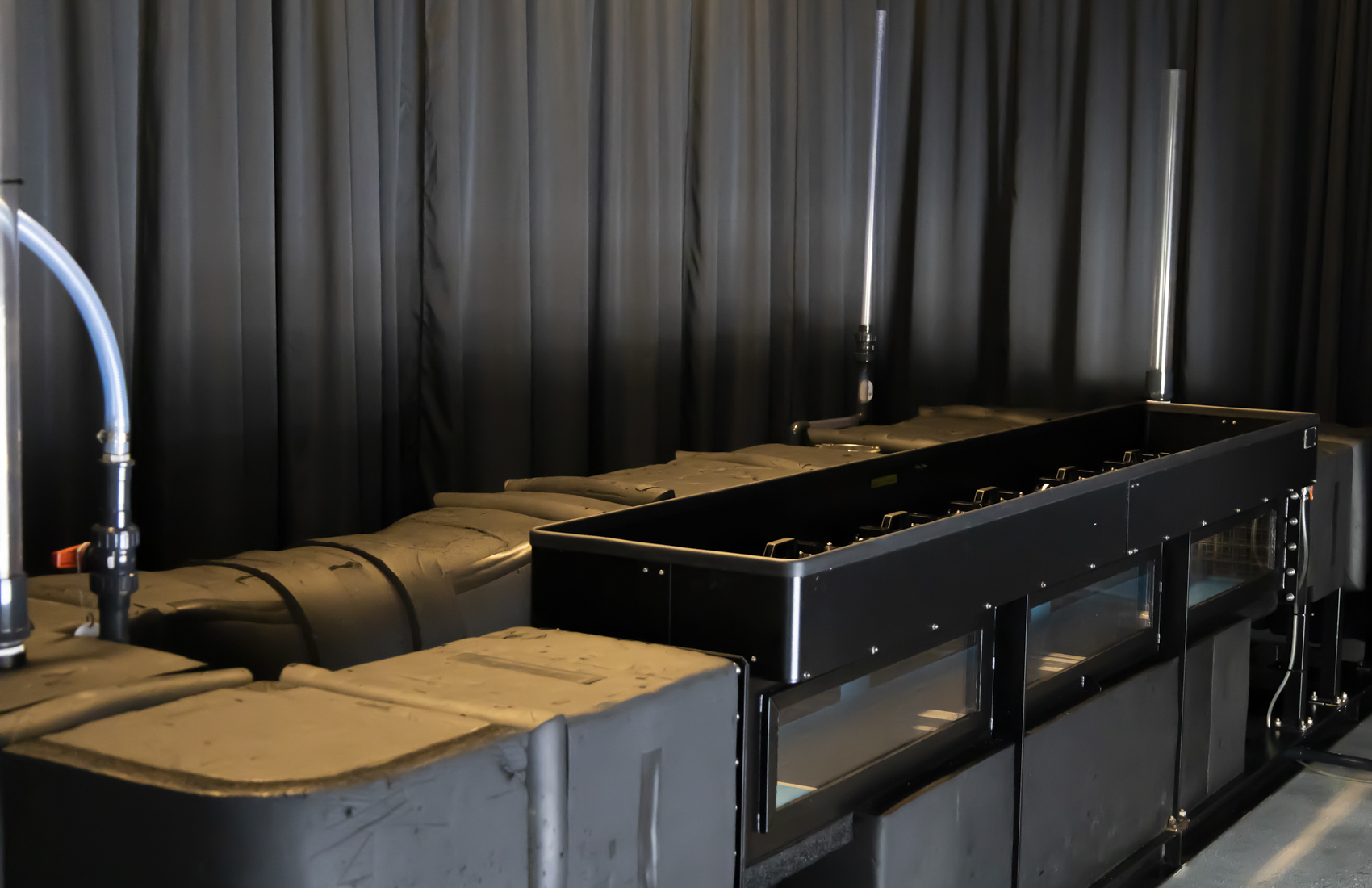
We are investigating the
3D reconstruction of feeding behavior
3D reconstruction of feeding movement consist of tracking body parts and reconstructing 2D videos into 3D. In behavioral studies, animals are usually marked with something distinguishable such as beads and tracked with softwares. However, it is difficult to put markers on garden eels and even if it were possible, you would need to consider the effects of markers on their behavior. In our study, we need to track body features frame by frame which is an endless task if done manually; So we have automated the task using Python package, DeepLabCut, which
Two of eyes enable us to convert visual information into three dimensions. In 3D reconstruction, multiple cameras are calibrated to track points while recording their relative position to one another. For this purpose, we are using dltdv package in Matlab.
3D reconstructions of behavior enable us to investigate various parameters in detail, such as time, distance, speed, angle, and the trajectory of a garden eel capturing a prey item. With this detailed behavioral analysis, we are trying to reveal
Results
As a result of this research, we have found
Initially, we kept the flow rate kept constant and changed the plankton density. The feeding rate was directly proportional to the plankton density. This result is similar to that of other plankton-eating fish, and indicates that the garden eels can maintain its feeding behavior and eat more plankton as long as the plankton density does not become extremely high. On the other hand, when we kept the plankton density constant and we changed the flow speed, feeding rate remained unchanged up to 0.15 m/s, but decreased at 0.20 m/s. This decrease in feeding rate at high flow speeds is similar to that of other plankton-eating fish, but it suggested
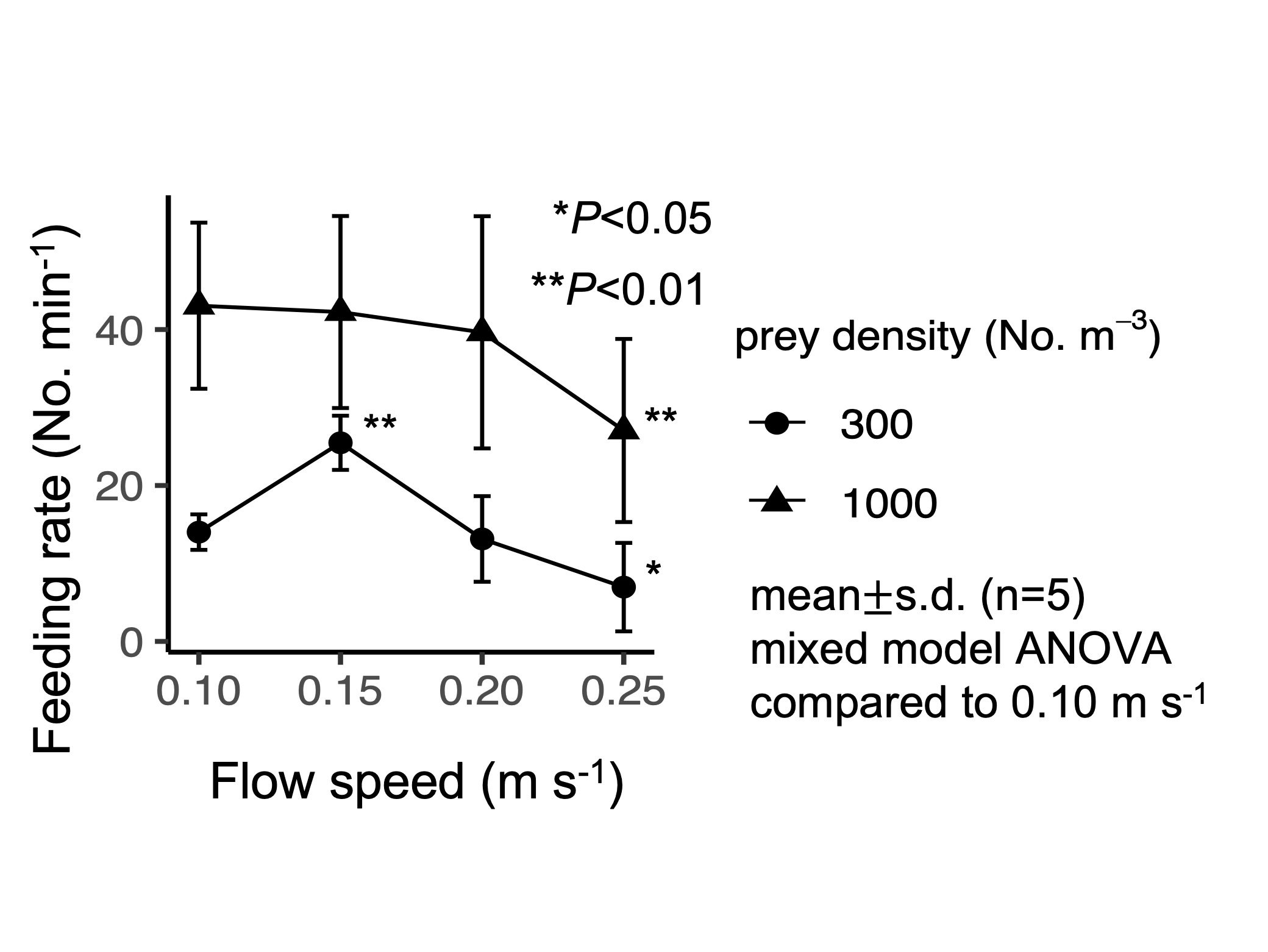
Therefore, in order to quantitatively evaluate the change in behavior, we reconstructed the behavior in 3D using the video footage taken during the experiment, and first examined the length outside the burrow and the foraging parameters. The foraging parameters were the average time and distance from when the prey was recognized to when it was captured (strike time and strike distance). The length, strike time, and strike distance decreased with the increase in flow speed, suggesting that

Additionally, when we examined the parameter called VeDBA (Vectorial Dynamic Body Acceleration), which has a high correlation with oxygen consumption, it was found to be constant regardless of the change in flow speed. It was expected that more energy would be consumed to maintain posture as the flow speed increases, but this was not actually the case. To explain why this is so, we calculated the drag force acting on the body based on the posture of the garden eels at each flow speed, and found that
Furthermore, finding the fact that the length of the body outside the burrow is strongly related to feeding, we assumed that all plankton passing through a semicircle area are captured by garden eels. Thus, we created a feeding model with the length of the body outside the burrow as the radius of the semicircle.
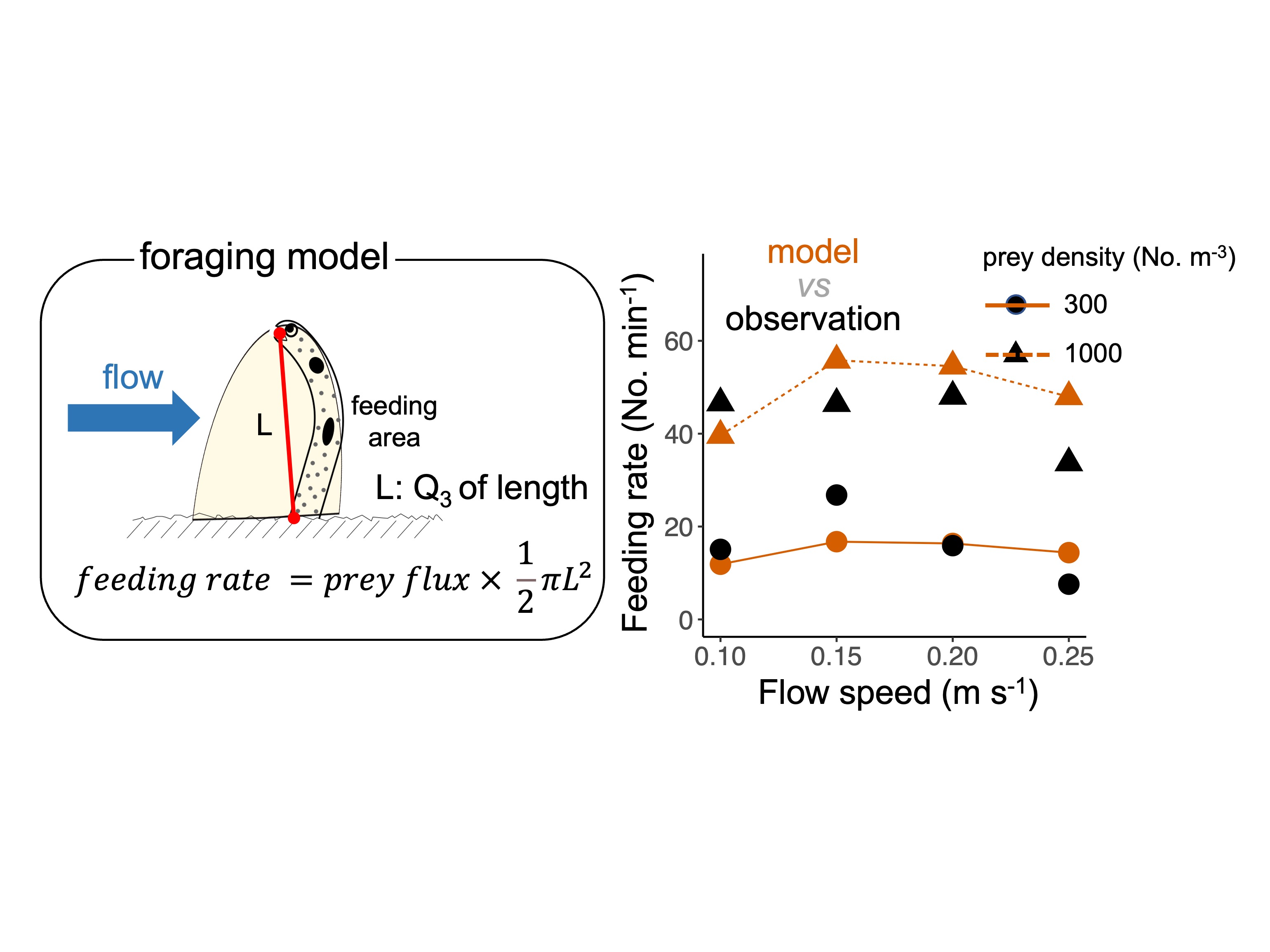
From the above results, we found that the garden eels make use of its unique lifestyle of feeding while keeping its body in a burrow, and efficiently feed on plankton in sandy habitats where there are few competitors and no shelters. This study received attention from various media such as the Okinawa Institute of Science and Technology press release, Sankei Shimbun news, Yomiuri Shimbun, and left a significant impact, such as reaching
